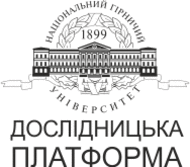№81-16
Features of transition of hybrid inverters to standalone mode with induction motors
P. Tsyhan¹, Yu. Shyshko¹, D. Chaika¹
1Dnipro University of Technology, Dnipro, Ukraine
Coll.res.pap.nat.min.univ. 2025, 81:159–169
Full text (PDF)
https://doi.org/10.33271/crpnmu/81.159
ABSTRACT
Purpose. To study the operating modes of a hybrid inverter with an active-inductive load and a reduced power factor due to the starting modes of induction motors in both standalone and grid-connected modes.
Methodology. Experimental methods were applied, including the use of an industrial power quality analyzer and investigation of a real solar power plant based on a hybrid inverter with an energy storage system and photovoltaic modules.
Results. The study revealed specific features of the transient process, represented as current and voltage oscillograms with significant waveform distortions during switching. These distortions indicate the potential hazards of operating asynchronous motors and hybrid inverters during mode transitions, i.e., switching from autonomous to grid-connected mode and vice versa. This is associated with the asynchronous motor entering a generator mode during machine run-down. The obtained results clearly demonstrate that systems based on hybrid inverters are sufficiently stable to withstand complex transient processes under dynamic active-inductive loads. However, voltage waveform distortions can trigger malfunctions in other protective devices and electrical equipment operating on the same bus.
Scientific novelty. The novelty lies in identifying the features of transient processes in inverter equipment with active-inductive loads and the variation of key electrical parameters depending on the ratio between inverter power and load power. The study establishes the dependence of the inverter cascade stability on the reactive power levels at the moment of asynchronous motor start-up, with reference to the permissible inverter power factor values during the transition from grid-supplied to inverter-supplied operation.
Practical significance. In justifying the use of additional power conversion equipment for operating induction motors with potential backup power from hybrid inverters, as well as in searching for technical solutions for current limiting during transitions from grid-supplied operation to inverter-supplied operation.
Keywords: transient process, hybrid inverter, induction motor, balancing current, waveform distortion.
References
1. Milenov, V., Zarkov, Z., & Romero, L. T. (2023). Application of hybrid inverters in photovoltaic systems. In Proceedings of the 18th Conference on Electrical Machines, Drives and Power Systems (ELMA). https://doi.org/10.1109/ELMA58392.2023.10202452
2. Gevorkov, L., Domínguez-García, J. L., Romero, L. T., & Martínez, À. F. (2023). Modern multiport converter technologies: Asystematicreview. Applied Sciences, 13(4), 2579. https://doi.org/10.3390/app13042579
3. Guo, Y., Geng, H., & Pal, B. C. (2021). Global optimality of inverter dynamic voltage support. IEEE Transactions on Power Systems, 37(5), 3690–3701. https://doi.org/10.1109/TPWRS.2021.3064239
4. Tanev, T., & Stanev, R. (2019). Mathematical model of photovoltaic inverters. In 2019 11th Electrical Engineering Faculty Conference (BulEF) (pp. 1–4). IEEE. https://doi.org/10.1109/BulEF48056.2019.9030901
5. Arnaudov, D., Hinov, N., Vuchev, S., & Nedyalkov, I. (2017). Modeling of multiphase converter for charging of energy storage elements. In PCIM Europe 2017; IECPE – Intelligent Motion, Renewable Energy and Energy Management (pp. 1–7).
6. Le, N. T., & Benjapolakul, W. (2019). Evaluation of contribution of PV array and inverter configurations to rooftop PV system energy yield using machine learning techniques. Energies, 12(24), 3158. https://doi.org/10.3390/en12243158




